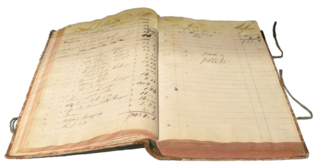 W
WAn accounting period, in bookkeeping, is the period with reference to which management accounts and financial statements are prepared.
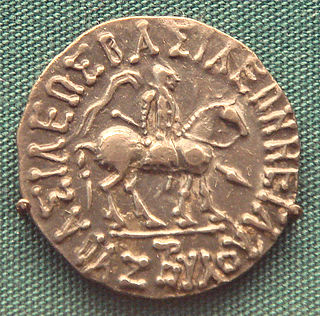 W
WThe "Azes era" starting 47/46 BCE, was named after the Indo-Scythian king, "King Azes the Great" or Azes I. As a number of inscriptions are dated in this era it is of great importance in dating the reigns of several kings and events in early Indian history.
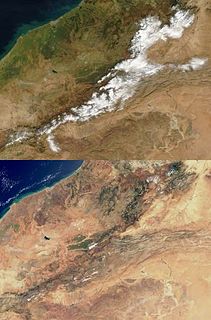 W
WThe Berber calendar is the agricultural calendar traditionally used by Berbers. It is also known as the fellaḥi. The calendar is utilized to regulate the seasonal agricultural works.
 W
WThe Byzantine calendar, also called Roman calendar, Creation Era of Constantinople or Era of the World, was the calendar used by the Eastern Orthodox Church from c. 691 to 1728 in the Ecumenical Patriarchate. It was also the official calendar of the Byzantine Empire from 988 to 1453 and of Kievan Rus' and Russia from c. 988 to 1700. This calendar was used also in other areas of the Byzantine commonwealth such as in Serbia, where it is found in old Serbian legal documents such as Dušan's Code, thus being referred to as the Serbian Calendar as well. Since Byzantine is a historiographical term, the original name uses the adjective "Roman" as it was what the Eastern Roman Empire continued calling itself.
 W
WThe calendar of saints is the traditional Christian method of organizing a liturgical year by associating each day with one or more saints and referring to the day as the feast day or feast of said saint. The word "feast" in this context does not mean "a large meal, typically a celebratory one", but instead "an annual religious celebration, a day dedicated to a particular saint".
 W
WThe Cappadocian calendar was a solar calendar that was derived from the Persian Zoroastrian calendar. It is named after the historic region Cappadocia in present-day Turkey, where it was used. The calendar, which had 12 months of 30 days each and five epagomenal days, originated between 550 and 330 BC, when Cappadocia was part of the Persian Achaemenid Empire. The Cappadocian calendar was identical to the Zoroastrian calendar; this can be seen in its structure, in the Avestan names and in the order of the months. The Cappadocian calendar reflects the Iranian cultural influence in the region. Extant evidence of the calendar dates back to Late Antiquity through the accounts of Greek astronomers, by which time it had already been adapted to the Julian calendar.
 W
WThe Cherokee calendar is traditionally defined as a Lunar calendar marked by 13 moon cycles of 28 days. Each cycle was accompanied by a ceremony. In order to rectify the Cherokee calendar with that of the Julian calendar, these cycles were reduced to 12. The seasonal round of ceremonies was integral to Cherokee society. It was considered an important spiritual element for social cohesion and a way to bring all the Cherokee clans together.
 W
WThe traditional Chinese calendar, is a lunisolar calendar which reckons years, months, and days according to astronomical phenomena. In China, it is defined by the Chinese national standard GB/T 33661–2017, "Calculation and promulgation of the Chinese calendar", issued by the Standardization Administration of China on May 12, 2017.
 W
WThis Chinese calendar correspondence table shows the stem/branch year names, correspondences to the Western (Gregorian) calendar, and other related information for the current, 79th Sexagenary cycle of the Chinese calendar based on the 2697 BC epoch or the 78th cycle if using the 2637 BC epoch.
 W
WThe Chronograph of 354, also known as the Calendar of 354, is a compilation of chronological and calendrical texts produced in 354 AD for a wealthy Roman Christian named Valentinus by the calligrapher and illustrator Furius Dionysius Filocalus. The original illustrated manuscript is lost, but several copies have survived. It is the earliest dated codex to have full page illustrations. The term Calendar of Filocalus is sometimes used to describe the whole collection, and sometimes just the sixth part, which is the Calendar itself. Other versions of the names are occasionally used. The text and illustrations are available online.
 W
WThe Coligny calendar is a second century Celtic calendar found in 1897 in Coligny, France. It is a lunisolar calendar with a five-year cycle of 62 months. It has been used to reconstruct the ancient Celtic calendar. The letters on the calendar are Latin and the language is Gaulish.
 W
WThe Discordian or Erisian calendar is an alternative calendar used by some adherents of Discordianism. It is specified on page 00034 of the Principia Discordia.
 W
WThe Dreamspell is an esoteric calendar in part inspired by the Maya calendar by New Age spiritualist, Mayanist philosopher, and author José Argüelles and Lloydine Burris Argüelles. The Dreamspell calendar was initiated in 1987 and released as a board game in 1990.
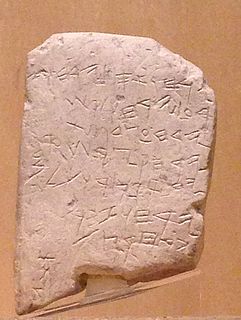 W
WThe Gezer calendar is a small limestone tablet with an early Canaanite inscription discovered in 1908 by Irish archaeologist R. A. Stewart Macalister in the ancient city of Gezer, 20 miles west of Jerusalem. It is commonly dated to the 10th century BCE, although the excavation was unstratified and its identification during the excavations was not in a "secure archaeological context", presenting uncertainty around the dating.
 W
WThe Hōryaku calendar was a Japanese lunisolar calendar. It was also known as Hōryaku Kōjutsu Gen-reki (宝暦甲戌元暦). It was published in 1755.
 W
WInter gravissimas was a papal bull issued by Pope Gregory XIII on 24 February 1582. The document, written in Latin, reformed the Julian calendar. The reform came to be regarded as a new calendar in its own right and came to be called the Gregorian calendar, which is used in most countries today.
 W
WJapanese calendar types have included a range of official and unofficial systems. At present, Japan uses the Gregorian calendar together with year designations stating the year of the reign of the current Emperor. The written form starts with the year, then the month and finally the day, coinciding with the ISO 8601 standard. For example, February 16, 2003 can be written as either 2003年2月16日 or 平成15年2月16日. 年 reads nen and means "year", 月 reads gatsu and means "month" and finally 日 (usually) reads nichi and means "day".
 W
WThe Jōkyō calendar was a Japanese lunisolar calendar, in use from 1684 to 1753. It was officially adopted in 1685.
 W
WMalayalam Calendar or Kollam Era is a solar and sidereal calendar used in Kerala. The origin of the calendar has been dated to 825 CE.
 W
WThe Mesoamerican Long Count calendar is a non-repeating, vigesimal (base 20) and octodecimal (base 18) calendar used by several pre-Columbian Mesoamerican cultures, most notably the Maya. For this reason, it is often known as the Maya Long Count calendar. Using a modified vigesimal tally, the Long Count calendar identifies a day by counting the number of days passed since a mythical creation date that corresponds to August 11, 3114 BCE in the Proleptic Gregorian calendar. The Long Count calendar was widely used on monuments.
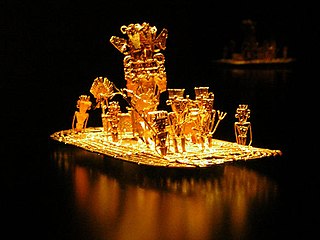 W
WThe Muisca calendar was a lunisolar calendar used by the Muisca. The calendar was composed of a complex combination of months and three types of years were used; rural years, holy years, and common years. Each month consisted of thirty days and the common year of twenty months, as twenty was the 'perfect' number of the Muisca, representing the total of extremeties; fingers and toes. The rural year usually contained twelve months, but one leap month was added. This month represented a month of rest. The holy year completed the full cycle with 37 months.
 W
WThe Nanakshahi calendar is a tropical solar calendar used in Sikhism. It is based on the "Barah Maha", a composition composed by the Sikh gurus reflecting the changes in nature conveyed in the twelve-month cycle of the year. The year begins with the month of Chet, with 1 Chet corresponding to 14 March. The reference epoch of the Nanakshahi calendar is the birth of Guru Nanak Dev, corresponding to the year 1469 CE.
 W
WNepal Sambat is the lunisolar calendar used by the people of Nepal. The Calendar era began on 20 October 879 AD, with 1142 in Nepal Sambat corresponding to the year 2021–2022 AD. Nepal Sambat appeared on coins, stone and copper plate inscriptions, royal decrees, chronicles, Hindu and Buddhist manuscripts, legal documents and correspondence. Though Nepal Sambat is declared a national calendar and is used widely in Nepal, it is mostly used by the Newar community whereas Bikram Sambat (B.S) remains the dominant calendar throughout the country.
 W
WPambu Panchangam is the name of a Tamil Calendar published by Manonmani Vilasam Press in Chennai since 1883. The publisher's title for the almanac for the Tamil year 2012-2013 is Asal No. 28, Nandana Varsha Suddha Vakya Panchangam. The almanac is popularly referred to as the Pambu Panchangam because the cover page of the almanac carries a prominent image of a snake. The snake referred to here is the Moon in the Panchangam. The image of the snake contains 27 small circles embedded with it. These circles represent the 27 days the Moon takes to complete one full cycle. The reason Moon is represented as a snake is that, due to the pull and push of various planets, its path is like the path left by a snake on sand.
 W
WA Runic calendar is a perpetual calendar, variants of which have been used in Northern Europe until the 19th century. A typical runic calendar consisted of several horizontal lines of symbols, one above the other. Special days like solstices, equinoxes, and celebrations were marked with additional lines of symbols.
 W
WThe Thai solar calendar was adopted by King Chulalongkorn in 1888 CE as the Siamese version of the Gregorian calendar, replacing the Thai lunar calendar as the legal calendar in Thailand. Years are now counted in the Buddhist Era (B.E.): พุทธศักราช, พ.ศ., which is 543 years ahead of the Gregorian calendar.
 W
WThe tōnalpōhualli, meaning "count of days" in Nahuatl, is a Mexica version of the 260-day calendar in use in pre-Columbian Mesoamerica. This calendar is neither solar nor lunar, but rather consists of 20 13-day periods. Each trecena is ruled by a different deity. Graphic representations for the twenty day names have existed among certain ethnic, linguistic, or archaeologically identified peoples.
 W
WThe Vietnamese calendar is a lunisolar calendar that is mostly based on the lunisolar Chinese calendar. As Vietnam's official calendar has been the Gregorian calendar since 1954, the Vietnamese calendar is used mainly to observe lunisolar holidays and commemorations, such as Tết and Mid-Autumn Festival.
 W
WThe Yoruba calendar (Kọ́jọ́dá) is a calendar used by the Yoruba people of southwestern and north central Nigeria and southern Benin. The calendar has a year beginning on the last moon of May or first moon of June of the Gregorian calendar. The new year coincides with the Ifá festival.
Adherents of Zoroastrianism use three distinct versions of traditional calendars for liturgical purposes, all derived from medieval Iranian calendars and ultimately based on the Babylonian calendar as used in the Achaemenid empire. Qadimi ("ancient") is a traditional reckoning introduced in 1006. Shahanshahi ("imperial") is a calendar reconstructed from the 10th century text Denkard. Fasli is a term for a 1906 adaptation of the 11th century Jalali calendar following a proposal by Kharshedji Rustomji Cama made in the 1860s.